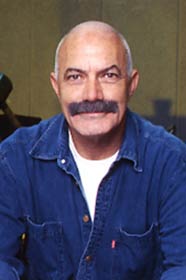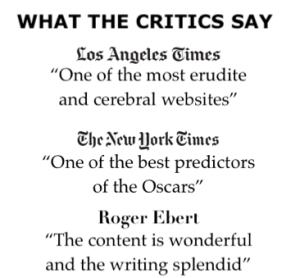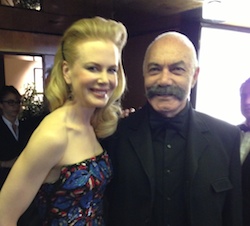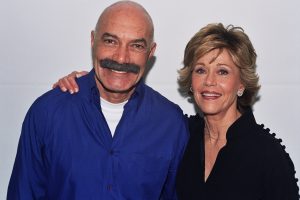How They Shot the ‘Psycho’ Shower Scene With More Gore and Nudity

SPOILER ALERT:
This story contains plot points
After profiling Jeffrey Dahmer and Lyle and Erik Menendez, fans of Netflix’s anthology series “Monster” can now watch the third season about serial killer Ed Gein.
Played by Charlie Hunnam, Gein is haunted by his mother Augusta (Laurie Metcalf), egged on by dark love interest, Adeline (Suzanna Son), and interacts with victims like Bernice (Lesley Manville) and Evelyn (Addison Rae).
He daydreams about the work of Nazi Ilse Koch (Vicky Krieps), rumored to flay Jewish victims and turn their skin into objects like lampshades.
Interspersed with these stories is the making of horror hits like Psycho and The Texas Chain Saw Massacre, inspired by Gein.
The whole thing started with Ryan taking Charlie and me through the vision of what he wanted the show to be and feel like, like asking the question, “Who is the monster?” Is it the American healthcare system? Is it his mother, Augusta Gein? Is it Ed Gein? Is it Ilse Koch? Is it the filmmakers who got inspired by this? Is it the artists who made the comic books fetishizing Ilse Koch? Is it filmmakers like Hitchcock who put it into pop culture and changed movies forever?
Cinematographer Carolina Costa, with whom I’d done my movie “Flower,” and Ian did the “Texas Chain Saw” stuff. They had very specific independent 16 mm film inspiration for all the Texas stuff. Bauman and I were really inspired by “Capote,” the movie. In that, the isolation is a monster. This poor man, who had undiagnosed schizophrenia in these giant sweeping landscapes with just the wind and frozen corn, and no one to talk to, an abusive mother, a brother who’s out on the lam. Those landscapes from “Days of Heaven” and “Capote” were important to us, feeling the vastness of how small he is, and yet when you’re in his head, how loud his brain is.
Everything that happened in the snow in Chicago in the coldest few days of the year. I cannot believe the actors’ faces even moved. It was -16 degrees. We needed snow. It didn’t look like it was going to snow, and we couldn’t afford to cover everything in snow with visual effects or with snow machine. That Sunday it snowed, and we started shooting that Monday at 6:30 am, and it gave us everything we needed.
I was really happy with the emotions in the finale, the sort of “All That Jazz” moment where he’s confronted with what he’s wrought. All Ed Gein ever wanted was for his mother to be proud of him, and to get there was difficult. We shot that all in one day. That was like an 18-hour day. By the end of it, when we said cut, everyone just broke because it was our second-to-last day of shooting in Chicago.
Empathy?
I think about a guy like Ed Gein, who has just always been a weirdo, a monster, a freak. And what Ryan is interested in, which is fascinating, is, “Well, how did they get to be that way? Are people born evil?” Since the beginning of time, humans have killed people, and humans have done evil shit. We’re looking at it today in the news all the time. We look at the images of bodies in the newspaper, in the pilot — just bodies stacked upon bodies stacked upon bodies. He says, “They look like wood.”
We never tried to paint them by numbers. We tried to put our own spin on it. The shower scene is more brutal because our perspective of it is via Hitchcock, the monster for bringing this into movies that were not like that before. I loved the young actor playing Anthony Perkins, Joey Pollari, who is incredible. He felt like a monster because he had these feelings of being a homosexual and didn’t know who to talk to about it, and his therapist told him that he should get a lobotomy. I have affinity for old backlot movies, so getting to shoot those … anytime you get to shoot a bunch of guys in gladiator costumes, with them walking around taking a lunch break and smoking a cigarette, is a great day of work.
Ed’s breaking the fourth wall, talking to the audience?
With the invention of TV, it’s when Charlie looks in the camera at the Anthony Perkins scene and says, “You’re the one who can’t look away.” He’s turning it on the viewer and saying, “Are we the monsters because we’re watching this?” I know we are because we’re making it. But our point of view is it’s the monetization and fetishization of these really fucked up people, and it’s really heady.
Very end of the series?
The very last shot, with them on the porch, was the last thing we shot, and I had no idea we were going to do it. We were doing little bits and bobs back in L.A. because we missed some things when we went off to Chicago. I don’t know where it came from, but I just said, “Let’s go onto the porch.” And I knew that “Only a mother could love you” should be the last line of the series, because it’s just a whole “Rosebud” for why Ed did what he did in our version. And we didn’t know we were going to do it. Michael Bauman, who’s a literal genius and the DP who just shot “One Battle After Another,” made that morning light that was all on a stage. I just said, “I want that line and I’ll tell you when to say it, Laurie.” Props weren’t prepared, but we made them some lemonade, gave her something to knit — I think that was actually something she knitted that she had brought from home.










